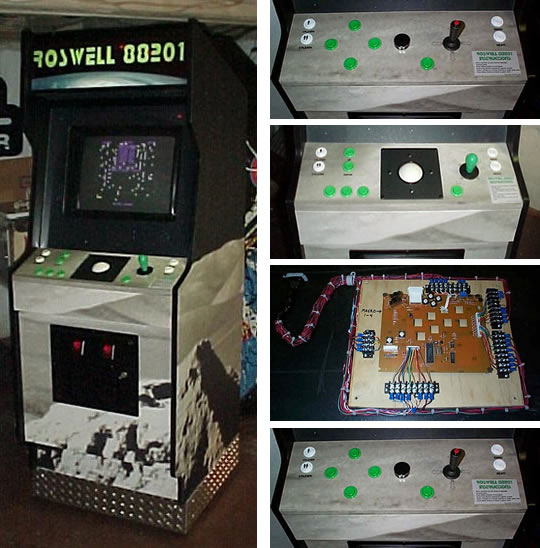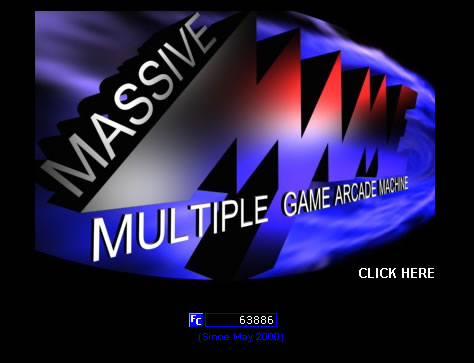




Forward by James McGovern
Few if any seasoned MAME enthusiasts and cabinet builders are not familiar with Zakk of the Massive MAME Project. Zakk has been in the trenches since the beginning of the push to port the MAME emulator to the arcade cabinets in which it belongs.
Through the years he has spawned over 20 project cabinets of all shapes and sizes and is still going strong. I would wager that he is one of the most prolific MAME cabinet builders around, especially of those who document their work as Zakk does in the incredible pages of the Massive MAME Project.
As if that were not enough, Zakk is also the man behind the MAMEY's curtain. The MAMEY awards, as administered by Zakk and his team, are bestowed upon cabinet builders who's work stands above the rest in a hobby that inspires many extremely creative and highly talented people to build their own home arcade systems.
In another show of commitment to the hobby, Zakk has agreed to pen an article for RetroBlast! readers that gives us some insight into the experience he has gained over the years. It is with much admiration and heartfelt thanks that I give you...

by Zakk
March 2006
It must be tough to be an artist. I say that because I imagine how Van Gogh must have felt about his early works, or Monet. Hanging there for everyone to see. In defiance to everything they may have learned in their later years.
Welcome to a Mame™ cabinet makers curse: If you build it, they will come. That much is true. However, they will also comment, and sometimes criticize, or even immortalize. You could famous, or you could be infamous. I reckon as someone who to date has built or rebuilt 23 arcade cabinets over the course of 6 years; I might know something of this phenomenon. I might not. Let me take you on a bit of a ride down memory lane:
It was sometime in ’98 or ’99 I stumbled on Mame™. (How many times have you heard that?) Well it was love at first sight. It was likely the same day, or shortly thereafter that I found Roswell. A simple (yet not so simple!) arcade cabinet that would not only play all the games in Mame™, but had swapable panels so you could play them properly! Brilliant!

One that led the way: Roswell 88201
It would have been shortly thereafter that I managed to get my hands on a bona fide arcade cabinet. It was in a damp basement, it was filled with concrete, and it was a terrible conversion, but it was mine! Within no time I had my own bondo-fill’ed, tack-paper panel’ed, undersized monitor’ed, keyboard hack’ed, and everything else’ed creation. Then came the web page… and so it began.
A link to the freshly minted “Massive Mame” site was submitted to the newsgroups. alt.games.mame to be exact. Next thing a strange animal named RocLobsta was e-mailing wanting to know if I wanted in on a new phenomenon known as Mameworld. The rest is (unfortunately) well documented history!

The Massive Mame website circa April 2001 courtesy of the Wayback Machine
I highly doubt that without the attention received as a resident of Mameworld that I would have continued to make cabinets. It was that exposure that garnered my first ‘clients’. People that would actually pay to have a cabinet! A lot has transpired and been learned since those ‘early’ days. That first cabinet, albeit a junker, was an Astron Belt.
"It is wrong to needlessly
damage a nice vintage arcade machine, only to cover it with shelf
paper and stick a keyboard hack into it." |
Now you might not be aware of it, but some people are mighty protective of old cabinets. Especially relatively rare ones such as Astron Belt. Never mind it is next to impossible to get all the parts together to recreate one, much less the fact that the game is a bit, er, lame. What you DO get is a lot of nasty hate mail.
In the years that followed, I have taken to much the same philosophy: It is wrong to needlessly damage a nice vintage arcade machine, only to cover it with shelf paper and stick a keyboard hack into it. If you absolutely MUST use a classic cabinet, leave the paint brush and the jigsaw in the workshop. Keep the cabinet as reversible as possible. Trade it to someone who wants to restore it. Don’t let your impatience to have one of these beasts in your home cloud your good judgment, because no matter how little you alter that cab, you WILL get hate mail.
Zakk's first control panel
This was the first thing learned as a constructor-converter. Second, was the realization that keyboard hacks don’t work. Not only are they not worth the effort it takes to make one, but they really just don’t work. The first game of Joust, played with a friend told me that the behemoth in my basement was flawed…and badly at that. Fortunately since those early days many new products have hit the market. Many innovations were just on the horizon from that day forward. In ‘the day’, the Hagstrom was the only encoder anyone talked about, and it cost more than the cabinet.
.jpg)
The Hagstrom KE24 Keyboard Encoder
Today we have a number of encoders, from innovators across the globe. These have by far brought the Mame™ cabinet to the masses. They have advanced to the point that one small card no bigger than a soda cracker can control buttons, joysticks, spinners and trackballs. Specialty cards abound, and all of them are inexpensive enough to make it almost less economically feasible to chop up a keyboard! In fact, it has been some time since I have seen a cabinet that boasted a keyboard hack. They’re surely out there, the owners are just keeping quiet about it.
The next revelation came after completing a number of
4-player cabinets. I have, to this date, made 6 (yes 6!) 4-player panels.
It’s highly doubtful there will be another.
The end came when a fellow contacted me to do a custom machine for him.
He wanted it to be the ‘end all’ of machines. I honestly didn't
want to do it, and had quite a few reservations that it could even be
accomplished.
"Seriously, how often
do you have 4 friends over that all need desperately to scrunch
together in front of an arcade machine? These games have been around
for 20+ years. They can wait a turn." |
He wanted a Zelda themed cabinet; complete with 4-player action, spinner, trackball, rotary joysticks, pinball buttons, huge sub woofer and as big a monitor as would fit. He wanted the rotary sticks to be separate, since they didn't come in different colors (and the colors had to match for each player). The computer had to run every emulator there ever was, from the 2600 to NES to Daphne.
The Zelda cab comes to life
It did get built, more just to see if I could make it all work, than from belief in the task. I look upon that as my swan song in the 4-player arena. Seriously, how often do you have 4 friends over that all need desperately to scrunch together in front of an arcade machine? These games have been around for 20+ years. They can wait a turn.
Third: Control layouts deserve a lot of thought. Just fitting buttons and joysticks into existing holes is not the way to do things. Balancing out functionality with appearance is the brush that separates the artist from the doodler. One or two players? Classic buttons or fighter layout? Trackball? Spinner? Flipper buttons? Where does it end?
There are endless debates on joysticks. Some, such as me, swear that 4-way sticks must be present on a panel, and separate from an 8-way stick. Others feel a switchable 4-8way stick should suffice. The choice should be a personal one, but remember that a layout that makes sense to someone that just wanders up to the cabinet is going to be more fun in the long run.
One last thing: leave the admin buttons hidden. For the last time you do NOT need “O” and “K” buttons on the panel! I personally like to have the mouse buttons on there, and a pause button, and ‘coin’, but that’s about the extent of it. The mouse buttons are personal choice, more useful for the person setting up the machine than the player. Add to that the fact that most of the optical encoders come with the mouse buttons pre-wired.
| "...don’t
skimp on the monitor. Nobody ever goes over to a friend’s
house to watch the Super Bowl because it will be showing on an awesome
13” screen." |
Next, don’t skimp on the monitor. Nobody ever goes over to a friend’s house to watch the Super Bowl because it will be showing on an awesome 13” screen. Same goes for cabinets. If you can safely get the original monitor working, so much the better. There are great hybrid monitors out there that will accept input from both computers and from arcade boards. New technology with an authentic look and feel.
So back to the artist analogy. Looking back on the creations that have dragged their way out of the ‘Massive Mame Project’, some boast glaring mistakes, cut corners, dodgy artwork. The later ones are much easier on the old eyes, but every imperfection is glaringly obvious. The early ones are literally painful to look at. So many newbie mistakes. They are left there as a chronology of what has been learned, and where. My works are hanging on the walls of a small town museum, as a warning to tourists. It’s unfortunate that the tourists are looking at them and wondering “what was he thinking???”
In the weeks coming I might try and do some articles
or ‘how-to’s. This article has been more of a quick ‘how-NOT-to”.
Before you venture down the path, talk to the people who have traveled
the road before you. It might save some blood, sweat, tears, and plain
ole nasty e-mails!
RetroBlast! Recommended Links
|


